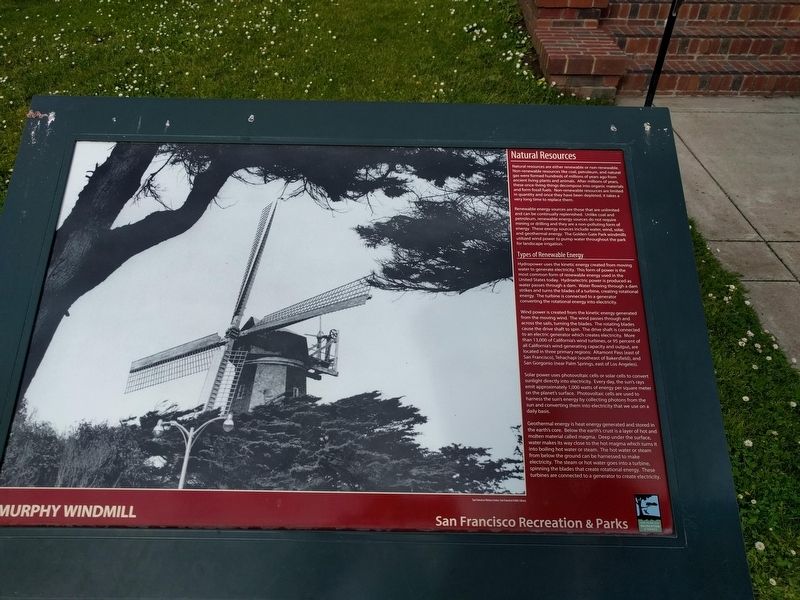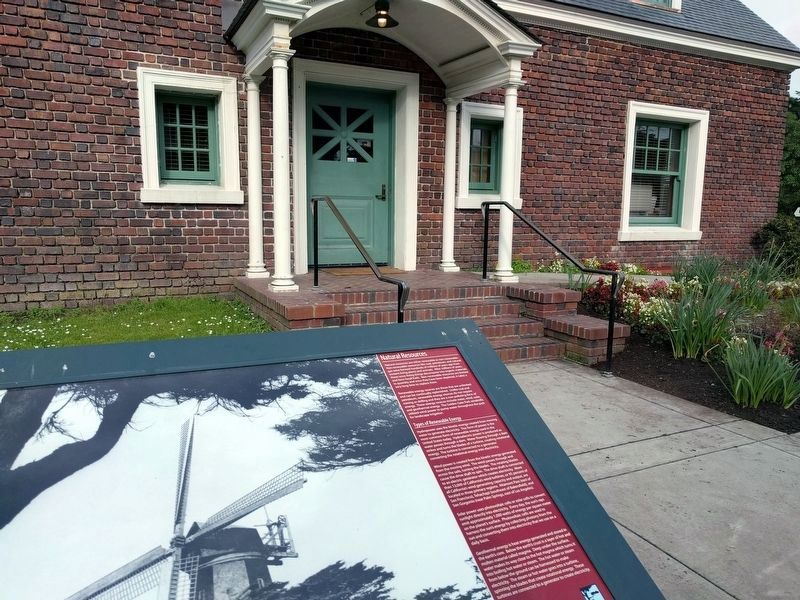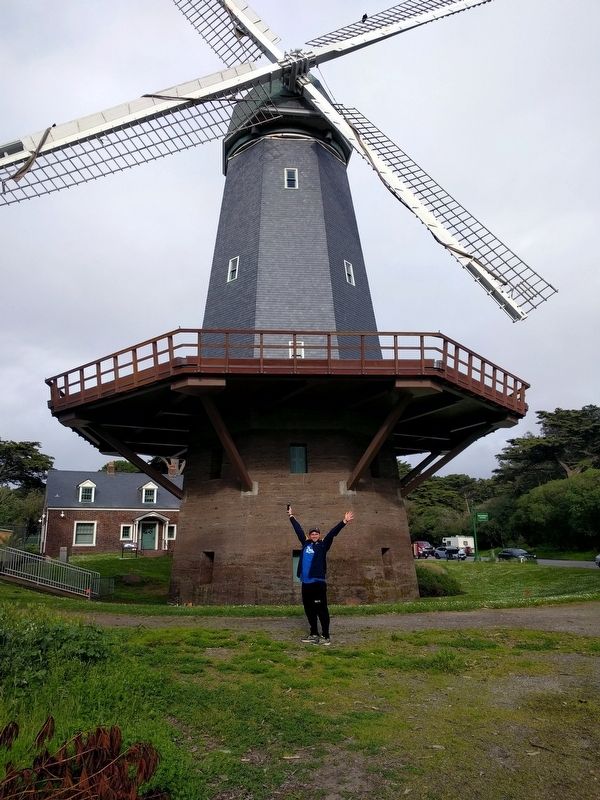Golden Gate Park in San Francisco City and County, California — The American West (Pacific Coastal)
Murphy Windmill
Natural Features
Natural Resources are either renewable or non-renewable. Non-renewable resources like coal, petroleum, and natural gas were formed hundreds of millions of years ago from ancient living plants and animals. After millions of years, these once-living things decompose into organic materials and form fossil fuels. Non-renewable resources are limited in quantity and once they have been depleted, it takes a very long time to replace them.
Renewable energy sources are those that are unlimited and can be continually replenished. Unlike coal and petroleum, renewable energy sources do not require mining or drilling and they are a non-polluting form of energy. These energy sources include water, wind, solar, and geothermal energy. The Golden Gate Park windmills utilized wind power to pump water throughout the park for landscape irrigation.
Types of Renewable Energy
Hydropower uses the kinetic energy created from moving water to generate electricity. This form of power is the most common form of renewable energy used in the United States today. Hydroelectric power is produced as water passes through a dam. Water flowing through a dam strikes and turns the blades of a turbine, creating rotational energy. The turbine is connected to a generator converting the rotational energy into electricity.
Wind power is created from the kinetic energy generated from the moving wind. The wind passes through and across the sails, turning the blades. The rotating blades cause the drive shaft to spin. The drive shaft is connected to an electric generator which creates electricity. More than 13,000 of California's wind turbines, or 95 percent of all California's wind generating capacity and output, are located in three primary regions: Altamont Pass (east of San Francisco), Tehachapi (southeast of Bakersfield), and San Gorgonio (near Palm Springs, east of Los Angeles).
Solar power uses photovoltaic cells or solar cells to convert sunlight directly into electricity. Every day, the sun's rays emit approximately 1,000 watts of energy per square meter on the planet's surface. Photovoltaic cells are used to harness the sun's energy by collecting photons from the sun and converting them into electricity that we use on a daily basis.
Geothermal energy is heat energy generated and stored in the earth's core. Below the earth's crust is a layer of hot and molten material called magma. Deep under the surface, water makes its way close to the hot magma which turns it into boiling hot water or steam. The hot water or steam from below the ground can be harnessed to make electricity. The steam or hot water goes into a turbine, spinning the blades that create rotational energy. These turbines are connected to a generator to create electricity.
Erected by San Francisco Recreation & Parks.
Topics. This historical marker is listed in this topic list: Natural Resources.
Location. 37° 45.909′ N, 122° 30.514′ W. Marker is in San Francisco, California, in San Francisco City and County. It is in Golden Gate Park. Marker can be reached from Martin Luther King Jr. Drive north of Lincoln Way, on the right when traveling west. Marker is in front of the Millwright Cottage next to the windmill. Touch for map. Marker is in this post office area: San Francisco CA 94121, United States of America. Touch for directions.
Other nearby markers. At least 8 other markers are within walking distance of this marker. A different marker also named Murphy Windmill (a few steps from this marker); a different marker also named Murphy Windmill (within shouting distance of this marker); Roald Amundsen (approx. 0.3 miles away); North Dutch Windmill (approx. 0.4 miles away); Historical Site (approx. 0.6 miles away); Ticket to Ride (approx. 0.6 miles away); A Memorable Muse (approx. 0.6 miles away); Turning Sand to Gold (approx. 0.6 miles away). Touch for a list and map of all markers in San Francisco.
Credits. This page was last revised on February 7, 2023. It was originally submitted on May 6, 2019, by Joel Seewald of Madison Heights, Michigan. This page has been viewed 232 times since then and 13 times this year. Photos: 1, 2, 3. submitted on May 6, 2019, by Joel Seewald of Madison Heights, Michigan.


